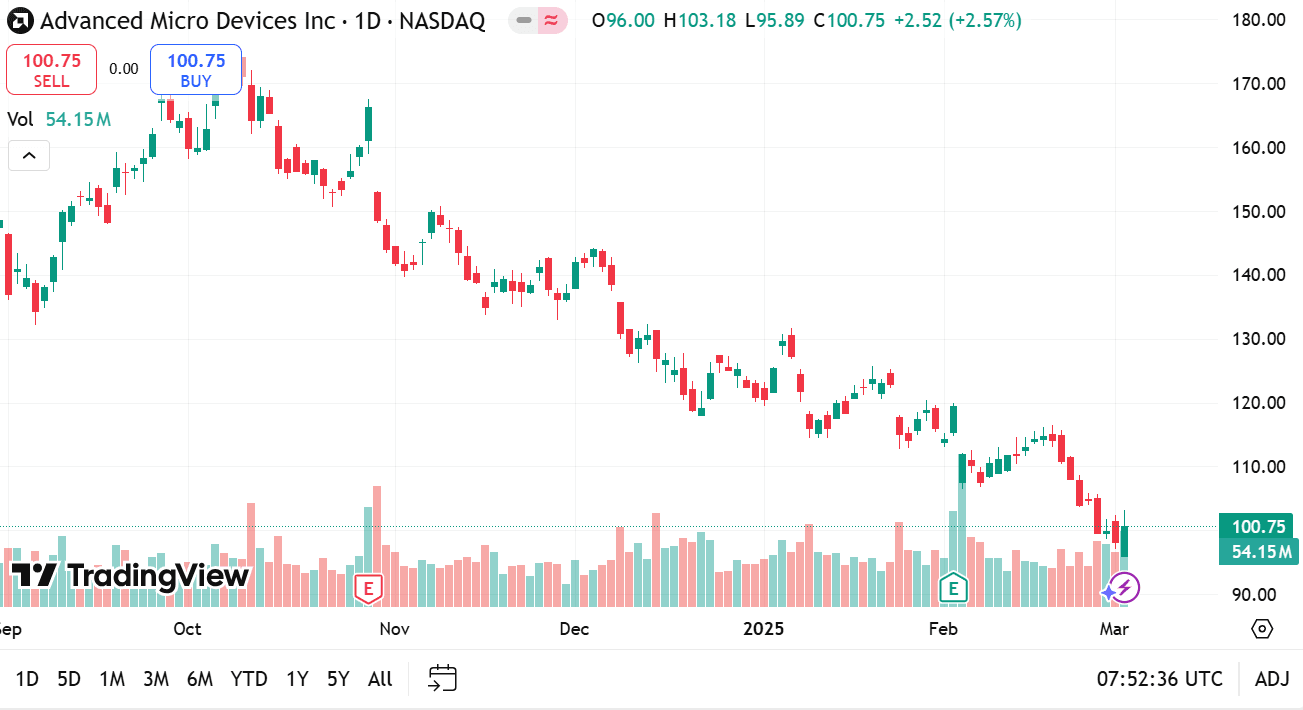Understanding AMD Stock: What HR Professionals and Business Leaders Need to Know
As the market swings and tech companies compete for dominance, it’s essential for HR professionals and business leaders to keep a pulse on significant stock movements, particularly with a major player like AMD (Advanced Micro Devices). In this post, we’ll delve deep into AMD’s stock performance, current trends, and implications for businesses and the tech-driven workforce.
The Current State of AMD Stock
AMD has long been a major player in the semiconductor industry, renowned for its graphics and processor chips. However, recently, the company’s stock has seen a significant downturn. In fact, Investopedia reports that AMD stock tumbled as the full-year data center outlook fell short of market expectations.
This downturn has various implications for not just investors but also professionals in HR and business leadership. Understanding the causes of such fluctuations can help professionals make informed decisions regarding talent management, hiring, and investment strategies.
Why AMD Stock Matters to Business Leaders
As the industry evolves, AMD’s stock performance often reflects broader trends in technology and the workforce. Business leaders should consider the following factors:
- Market Sentiment: Stock downturns can create a ripple effect that impacts employee sentiment and morale. When a company like AMD, which has been a beacon of innovation, experiences disappointment, employees may feel more anxious about their job security.
- Investment in Technology: AMD’s stock performance signals how businesses perceive future technology investments. If AMD’s forecast dims, companies may hesitate to invest in new technologies using AMD products. Understanding these shifts helps HR professionals align their workforce planning with available resources.
- Competition: Staying updated on competitors is critical. As AMD faces challenges, competitors like Intel and Nvidia may gain market share, impacting hiring strategies and training programs to match competitors’ advancements.
Analyzing the Recent Downturn
Recent events surrounding AMD stock paint a complex picture. The lower-than-expected data center outlook is attributed to intensified competition and a cooling demand in the tech market. This slowdown can lead to strategic shifts in hiring practices—companies might choose to be more conservative in recruitment or to adjust the skills they prioritize.
According to market analysts, another contributing factor is the ongoing global chip shortage, which continues to affect the supply chain. As a result, many firms relying on AMD chips find themselves in a precarious position, potentially leading to reduced hiring or changes in workforce requirements. For businesses employing AI and automation, understanding this landscape will be critical for aligning their workforce with operational goals.
How HR Can Adapt to Changes in the Tech Landscape
In light of these developments, HR professionals must be agile and forward-thinking. Here are some strategies to help navigate the challenges posed by changes in AMD stock performance:
- Upskill and Reskill: With the semiconductor industry in flux, upskilling your existing workforce is essential. Roles related to AI consulting, data manipulation, and automation workflows—like those facilitated by tools such as n8n—are becoming increasingly vital. Investing in training for these skills can help your team maintain a competitive edge.
- Talent Acquisition Strategies: Focus on attracting talent with diverse technical backgrounds. In uncertain times, emphasizing adaptability and a range of skills during the hiring process can help future-proof your organization.
- Flexible Work Arrangements: As the tech industry evolves, the importance of flexibility in working arrangements cannot be understated. Offering hybrid working options or flexible hours can attract the best talent, regardless of the market climate.
The Long-Term Outlook for AMD and the Tech Industry
While the immediate future for AMD may look shaky, it’s essential to consider the long-term implications. Innovations like AI and machine learning are pushing boundaries, and AMD holds potential for significant growth if the company can adapt to market needs.
For HR professionals and business leaders, this is a reminder to remain proactive. Building a culture that embraces change, promoting continuous learning, and keeping up with industry trends will be crucial to maintaining relevance in this evolving landscape.
Conclusion
AMD’s current stock challenges reflect broader market conditions and present unique considerations for HR professionals and business leaders. By understanding the nuances of these trends, organizations can better position themselves for sustained growth and adaptability in an ever-changing tech industry. Keeping a keen eye on stock performance not only aids in strategic planning but also in fostering a resilient workforce equipped to tackle future challenges. As we move forward, let us remember that agility and foresight will be our best allies.






